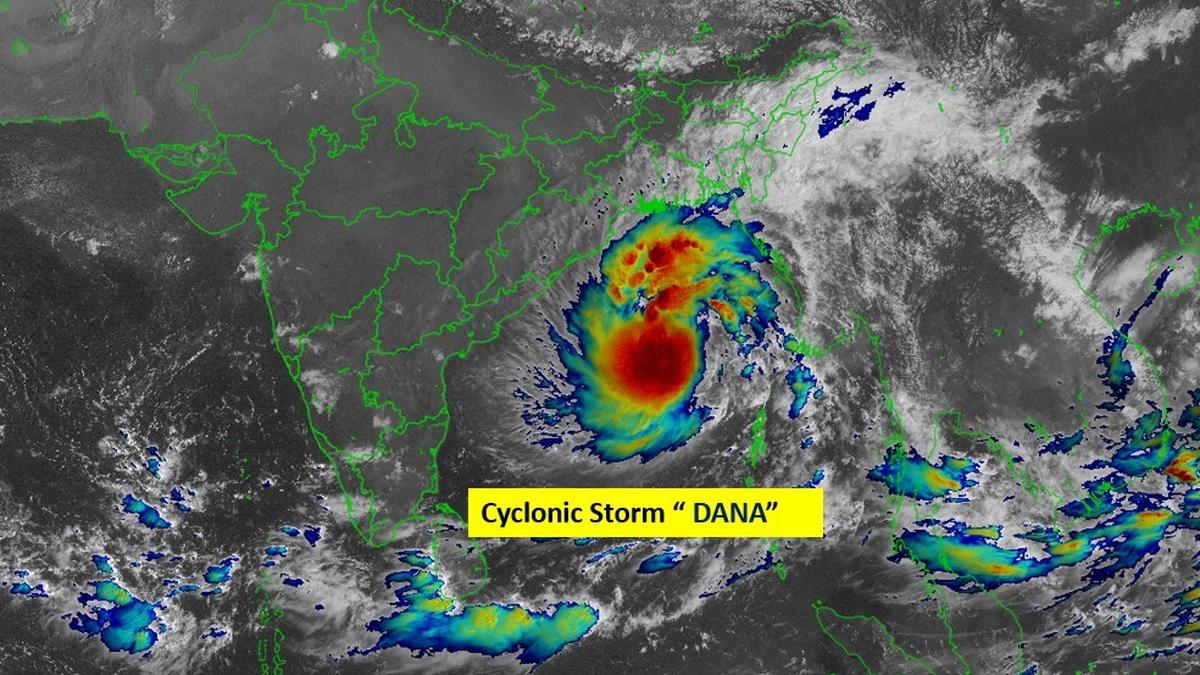Severe Cyclonic Storm Set to Barrel into Eastern India and Bangladesh: What You Need to Know
Summary
A severe cyclonic storm is forecasted to impact eastern India and Bangladesh imminently, causing widespread concern among residents and authorities alike. The India Meteorological Department has issued warnings regarding heavy rainfall, strong winds, and potential flooding. Preparations are underway to mitigate the storm’s effects, highlighting the region’s vulnerability to such natural disasters.
Full Article
Introduction: Understanding Cyclones and Their Impact
Cyclones are powerful natural phenomena that can unleash havoc upon communities, leaving devastation in their wake. The current forecast for a severe cyclonic storm barreling towards eastern India and Bangladesh serves as a stark reminder of nature’s ferocity and the need for preparedness. But what causes these storms, how do they form, and what can be done to lessen their impact? In this article, we’ll dive deep into the world of cyclones, the specifics of this upcoming storm, and what residents can do to stay safe.
What is a Cyclone?
A Quick Overview
Before we jump into the details of the current storm, let’s clarify what a cyclone actually is. In simple terms, a cyclone is a rapidly rotating storm system characterized by a low-pressure center and a spiral arrangement of thunderstorms. These systems can produce strong winds, heavy rain, and sometimes tornadoes.
Cyclones are classified into several categories based on their intensity. The most common classification includes:
- Tropical Depression: A system with maximum sustained winds of up to 38 mph.
- Tropical Storm: Winds between 39-73 mph.
- Cyclone (Hurricane/Typhoon): Winds exceeding 74 mph.
The conditions required for a cyclone to develop include warm ocean waters, atmospheric instability, and sufficient Coriolis effect (caused by the Earth’s rotation).
Current Cyclonic Storm Forecast: Key Details
What’s Happening?
As of now, meteorologists are closely monitoring a severe cyclonic storm heading toward eastern India and Bangladesh. The India Meteorological Department (IMD) has predicted that this storm will make landfall within the next few days, and the impact is expected to be significant.
Key Points of Concern:
- Wind Speeds: Forecasts suggest that wind speeds could reach up to 100 km/h (62 mph), posing a serious threat to structures and vegetation.
- Heavy Rainfall: The storm is anticipated to bring heavy rainfall, potentially leading to flash floods and landslides.
- Storm Surge: Coastal areas may face dangerous storm surges, which can inundate low-lying regions.
Impact on Eastern India and Bangladesh
The Vulnerable Areas
Eastern India, particularly states like Odisha and West Bengal, along with Bangladesh, are susceptible to cyclones. These regions have faced similar storms in the past, causing loss of life, displacement of people, and extensive damage to property.
Infrastructure at Risk
The infrastructure in these areas, including roads, bridges, and homes, often struggles to withstand the ferocity of such storms. Power outages are common, and essential services can be disrupted for days or even weeks.
Economic Implications
The economic impact of cyclones is profound. Agriculture, fishing, and local businesses may face setbacks that can take years to recover from. This is particularly crucial for regions that depend heavily on farming, where crop damage can lead to food shortages and increased prices.
Preparing for the Cyclone: Safety Tips
What Can Residents Do?
Preparation is key when it comes to facing a cyclone. Here are some essential safety tips for residents in affected areas:
- Stay Informed: Follow local news and weather forecasts to get the latest updates on the storm’s path and intensity.
- Create an Emergency Kit: Include essentials like water, non-perishable food, flashlights, batteries, medications, and important documents.
- Secure Your Property: Reinforce doors and windows, bring in outdoor furniture, and secure any loose items that could become projectiles in high winds.
- Evacuation Plans: Know your evacuation routes and have a plan for where to go if instructed by authorities.
- Stay Indoors: During the storm, stay indoors and away from windows. Find a safe space in your home, preferably a room with no windows.
Government Response and Preparedness
Role of Local Authorities
In anticipation of the storm, local authorities are ramping up preparedness efforts. This includes:
- Evacuation Centers: Setting up temporary shelters for those in vulnerable areas.
- Emergency Services: Mobilizing emergency services and ensuring they are equipped to respond effectively.
- Public Awareness Campaigns: Disseminating information about the storm and safety protocols via social media, radio, and local announcements.
The Importance of Community Resilience
Building Stronger Communities
Cyclones test the mettle of communities, revealing vulnerabilities while also showcasing resilience. The power of community cannot be underestimated during such times. Neighbors helping neighbors, sharing resources, and providing support can make all the difference in a crisis.
In addition, investing in infrastructure that can withstand severe weather events is crucial for long-term resilience. This includes constructing buildings to better withstand high winds and flooding, as well as improving drainage systems to manage heavy rainfall.
The Aftermath: What to Expect
Post-Cyclone Recovery
Once the storm passes, the focus will shift to recovery efforts. This is often a lengthy process that can include:
- Damage Assessment: Assessing the extent of damage to infrastructure and homes.
- Restoration of Services: Restoring power, water, and other essential services.
- Community Support: Providing aid to affected families and individuals, including food, shelter, and counseling.
Long-Term Effects
Beyond immediate recovery, the long-term effects of cyclones can linger for years. Economies may take time to rebound, and the psychological impact on residents can be profound. Building back stronger and more resilient will be critical for communities facing the inevitability of future storms.
Conclusion: A Call to Action
As the severe cyclonic storm approaches eastern India and Bangladesh, it serves as a reminder of the power of nature and the importance of preparedness. By taking proactive measures, staying informed, and relying on one another, communities can better weather the storm and emerge stronger on the other side.
Cyclones are a part of life in many coastal regions, but how we respond to them can make all the difference. So, as the winds pick up and the rains begin to fall, let’s remember: it’s not just about surviving the storm but also about building a future that’s prepared for whatever comes our way.
FAQs
- What is a cyclone, and how does it form?
- A cyclone is a powerful storm system that forms over warm ocean waters, characterized by a low-pressure center and rotating winds.
- What areas are most vulnerable to cyclones?
- Coastal regions, particularly in eastern India and Bangladesh, are highly susceptible to cyclones.
- How can residents prepare for an approaching cyclone?
- Residents should stay informed, create an emergency kit, secure their property, know evacuation routes, and stay indoors during the storm.
- What role do local authorities play during a cyclone?
- Local authorities coordinate emergency services, set up evacuation centers, and provide public awareness campaigns to keep residents safe.
- What are the long-term effects of cyclones on communities?
- Cyclones can lead to economic setbacks, infrastructure damage, and psychological impacts on residents, necessitating a focus on recovery and resilience.




